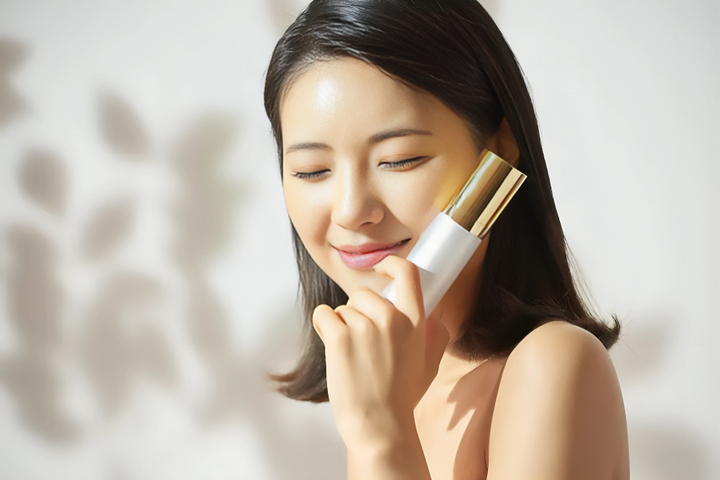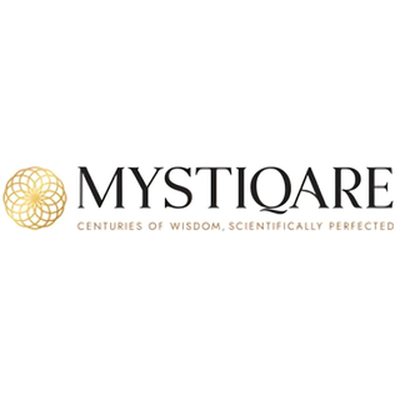Japanese vs Korean Skin Care Routine
Posted By Mystiqare Company
Body
Japanese vs Korean Skin Care Routine: What's the Real Difference?
Of all Asian beauty rituals, Japanese vs Korean skin care routine are two of the most renowned and successful regimens globally. Both share a focus on attaining healthy, glowing skin, but they have some major differences in philosophy, products, and methods. If you've ever been curious about what makes these two routines so different, this in-depth guide will give you an idea of their fundamental differences and help you determine which one could be for you.

Philosophy: Minimalism vs. Innovation
Japanese skincare adheres to a "less is more" philosophy with a focus on simplicity, quality products, and timeless traditions. Its aim is healthy skin through the least possible effort. Japanese skin care routine depend mainly on gentle washing, thorough hydrating, and sun protection in the belief that prevention is best for lasting beauty.
By contrast, Korean skin care is innovative and multi-step. It's all about getting "glass skin," or a smooth, clear, and glowing complexion by layering up many light products. The Korean beauty market is renowned for its innovative formulas and trend-based products, which keep evolving to deliver the newest in skin care innovation.
Steps in the Routine: How They Differ
Whereas both routines place a lot of emphasis on protection and hydration, how they get there is remarkably different. Let's examine their standard steps:
Japanese Skin Care Routine
Oil Cleanser – It dissolves makeup and grime without dehydrating the skin.
Foam or Cream Cleanser – A second wash for a residue-free, refreshed face.
Lotion (Toner) – Moisturizes and calms, opening pores for subsequent care.
Serum or Essence – A thin application with dense content.
Emulsion or Moisturizer – Locks in moisture without being too rich.
Sunscreen – Everyday UV protection, a must-do step.
Japanese routines tend to be shorter, with an emphasis on gentle yet effective treatment. The products are typically made with high-quality natural ingredients like rice bran, green tea, and seaweed, which have been utilized for centuries in Japanese beauty rituals.
Korean Skin Care Routine
Oil Cleanser – Dissolves makeup and sunscreen.
Water-Based Cleanser – Wipes away any lingering dirt and excess oil.
Exfoliation (1-2 times a week) – Removes dead skin cells for a smoother face.
Toner – Moisturizes and prepares the skin for improved product absorption.
Essence – A light liquid filled with nourishing ingredients.
Serum or Ampoule – Focused treatment for specific skin issues.
Sheet Mask (2-3 times a week) – Delivers hydration and nutrients to the skin.
Eye Cream – Adds an extra layer of moisture for sensitive under-eye skin.
Moisturizer – Seals in all the layers of moisture.
Sunscreen – The most important step to prevent premature aging.
Korean skin care routines are generally more involved, using multiple layers of moisture to attain a dewy, plump face. They also often use trendy ingredients like snail mucin, propolis, and fermented extracts.
Ingredients: Tradition vs. Technology
Japanese cosmetics emphasize high-quality, natural ingredients that have been used for hundreds of years. Some of the important ingredients are:
Rice Bran – Packed with antioxidants and assists in brightening the skin.
Green Tea – Anti-inflammatory and packed with polyphenols to combat aging.
Camellia Oil – A highly moisturizing yet lightweight oil.
Seaweed Extracts – Hydrating and mineral-packed for a radiant complexion.
Korean skin care, however, is famous for its experimentation and innovation. Some of the ingredients that are used frequently are:
Snail Mucin – Facilitates skin regeneration and moisturizing.
Propolis – A natural antibacterial that calms and heals the skin.
Centella Asiatica – Anti-inflammatory that heals the skin.
Fermented Ingredients – Improve absorption and provide strong antioxidants.
Texture & Consistency: Lightweight vs. Rich
Japanese products are generally more watery or gel-like in texture for fast absorption with non-sticky finishes. They follow their philosophy of layering light hydration without clogging the skin.
Korean products are lightweight too but aim to produce a plump, bouncy finish through several layers of hydration. Essences, ampoules, and sleeping masks offer long-lasting hydration, sometimes leaving the skin dewy.
Packaging & Aesthetic: Elegant Simplicity vs. Trendy & Playful
Japanese skin care packaging tends to be minimalist, elegant, and sleek. Companies such as Shiseido, SK-II, and Hada Labo emphasize understated luxury with the belief that skin care must be simple but effective.
Korean cosmetics companies, however, tend to welcome fun, bright, and attention-grabbing packaging. Companies such as Etude House, Innisfree, and Laneige craft products that look beautiful and are playful, allowing skin care to become a happy ritual instead of a burden.
Which One is Right for You?
If you want a no-frills, streamlined routine with great, tried-and-true ingredients, the Japanese skin care products in India philosophy may be the way to go. It's perfect for people who appreciate less is more and don't need a fuss in their routine that still yields amazing results.
But if you're a product junkie who wants to try all the new products, enjoys a longer self-care process, and needs to get that ultra-hydrated, glass-skin effect, then the Korean method may be your best bet.
Final Thoughts
Both Japanese and Korean skin care regimens have their merits and can be adapted to fit various skin types and lifestyles. Regardless of which regimen you follow, the most important thing to remember is consistency—healthy skin is not about the number of products you use but how well you take care of it on a daily basis.
So, Team Japan or Team Korean skin care routine? Or somewhere in between? The perfect routine is one that makes you confident in your own skin!
Of all Asian beauty rituals, Japanese vs Korean skin care routine are two of the most renowned and successful regimens globally. Both share a focus on attaining healthy, glowing skin, but they have some major differences in philosophy, products, and methods. If you've ever been curious about what makes these two routines so different, this in-depth guide will give you an idea of their fundamental differences and help you determine which one could be for you.

Philosophy: Minimalism vs. Innovation
Japanese skincare adheres to a "less is more" philosophy with a focus on simplicity, quality products, and timeless traditions. Its aim is healthy skin through the least possible effort. Japanese skin care routine depend mainly on gentle washing, thorough hydrating, and sun protection in the belief that prevention is best for lasting beauty.
By contrast, Korean skin care is innovative and multi-step. It's all about getting "glass skin," or a smooth, clear, and glowing complexion by layering up many light products. The Korean beauty market is renowned for its innovative formulas and trend-based products, which keep evolving to deliver the newest in skin care innovation.
Steps in the Routine: How They Differ
Whereas both routines place a lot of emphasis on protection and hydration, how they get there is remarkably different. Let's examine their standard steps:
Japanese Skin Care Routine
Oil Cleanser – It dissolves makeup and grime without dehydrating the skin.
Foam or Cream Cleanser – A second wash for a residue-free, refreshed face.
Lotion (Toner) – Moisturizes and calms, opening pores for subsequent care.
Serum or Essence – A thin application with dense content.
Emulsion or Moisturizer – Locks in moisture without being too rich.
Sunscreen – Everyday UV protection, a must-do step.
Japanese routines tend to be shorter, with an emphasis on gentle yet effective treatment. The products are typically made with high-quality natural ingredients like rice bran, green tea, and seaweed, which have been utilized for centuries in Japanese beauty rituals.
Korean Skin Care Routine
Oil Cleanser – Dissolves makeup and sunscreen.
Water-Based Cleanser – Wipes away any lingering dirt and excess oil.
Exfoliation (1-2 times a week) – Removes dead skin cells for a smoother face.
Toner – Moisturizes and prepares the skin for improved product absorption.
Essence – A light liquid filled with nourishing ingredients.
Serum or Ampoule – Focused treatment for specific skin issues.
Sheet Mask (2-3 times a week) – Delivers hydration and nutrients to the skin.
Eye Cream – Adds an extra layer of moisture for sensitive under-eye skin.
Moisturizer – Seals in all the layers of moisture.
Sunscreen – The most important step to prevent premature aging.
Korean skin care routines are generally more involved, using multiple layers of moisture to attain a dewy, plump face. They also often use trendy ingredients like snail mucin, propolis, and fermented extracts.
Ingredients: Tradition vs. Technology
Japanese cosmetics emphasize high-quality, natural ingredients that have been used for hundreds of years. Some of the important ingredients are:
Rice Bran – Packed with antioxidants and assists in brightening the skin.
Green Tea – Anti-inflammatory and packed with polyphenols to combat aging.
Camellia Oil – A highly moisturizing yet lightweight oil.
Seaweed Extracts – Hydrating and mineral-packed for a radiant complexion.
Korean skin care, however, is famous for its experimentation and innovation. Some of the ingredients that are used frequently are:
Snail Mucin – Facilitates skin regeneration and moisturizing.
Propolis – A natural antibacterial that calms and heals the skin.
Centella Asiatica – Anti-inflammatory that heals the skin.
Fermented Ingredients – Improve absorption and provide strong antioxidants.
Texture & Consistency: Lightweight vs. Rich
Japanese products are generally more watery or gel-like in texture for fast absorption with non-sticky finishes. They follow their philosophy of layering light hydration without clogging the skin.
Korean products are lightweight too but aim to produce a plump, bouncy finish through several layers of hydration. Essences, ampoules, and sleeping masks offer long-lasting hydration, sometimes leaving the skin dewy.
Packaging & Aesthetic: Elegant Simplicity vs. Trendy & Playful
Japanese skin care packaging tends to be minimalist, elegant, and sleek. Companies such as Shiseido, SK-II, and Hada Labo emphasize understated luxury with the belief that skin care must be simple but effective.
Korean cosmetics companies, however, tend to welcome fun, bright, and attention-grabbing packaging. Companies such as Etude House, Innisfree, and Laneige craft products that look beautiful and are playful, allowing skin care to become a happy ritual instead of a burden.
Which One is Right for You?
If you want a no-frills, streamlined routine with great, tried-and-true ingredients, the Japanese skin care products in India philosophy may be the way to go. It's perfect for people who appreciate less is more and don't need a fuss in their routine that still yields amazing results.
But if you're a product junkie who wants to try all the new products, enjoys a longer self-care process, and needs to get that ultra-hydrated, glass-skin effect, then the Korean method may be your best bet.
Final Thoughts
Both Japanese and Korean skin care regimens have their merits and can be adapted to fit various skin types and lifestyles. Regardless of which regimen you follow, the most important thing to remember is consistency—healthy skin is not about the number of products you use but how well you take care of it on a daily basis.
So, Team Japan or Team Korean skin care routine? Or somewhere in between? The perfect routine is one that makes you confident in your own skin!






Comments